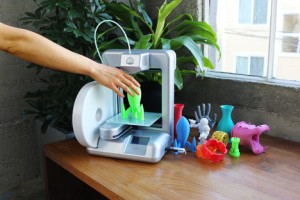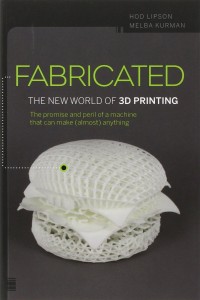
Predictions that 3D printing is rapidly becoming a reality raise a lot of questions. Does that mean that a printer (or two or more) will join the standard computer in the majority of American homes? Or will the technology create industrial and commercial tools that will affect individuals only as they become users of their products?
It would be easy to envision a whole line-up of 3D printers in the home — one to print out custom makeup for the ladies in the family; one to create toys for the kids, another to whip out golf balls for dad, not to mention the family food printer that would produce elegant pastries as well as standard pasta dishes.
There is plenty of debate already ongoing among the experts in the field regarding the potential for individual applications of the technology vs. broader uses. Before you get carried away with visions of your home’s 3D printing devices, you might like an opinion from one of those who is deep into the development of the prototypes that precede the real thing.
Terry Wohlers, who heads a company involved in analysis and consulting on matters related to the evolution of 3D printing, is a skeptic about the potential of widespread use of 3D printers in the home, but he is certain that in the near future, the technology will be used to benefit all Americans through commercial, medical and industry applications.
He relates the future of 3D to the present saturation of computers. “Just like with computers, you have some computers at home for specific things and computers at work for other things,” he explained. Food is the only thing “manufactured” in the majority of American homes and 3D likely will find its useful place to facilitate that activity, he believes. 
Hod Lipson, who is exploring many kinds of eventual 3D printing uses as a scientist with Cornell University’s Creative Machines Lab, has a little broader conception of how the technology might affect individuals. He sees people using 3D printers to enhance nutrition and direct health regimens, among other things. A robot conceivably could guide your eating habits.
“You will have a hard time explaining to your grandchildren how you could live without a 3D printer,” he says. “In two decades we’ll wonder how we were able to live without 3D Printing.” Already the term “3D printing” is working its way into the American vocabulary and soon, the phrase will drop off the tongue as readily as the word “computer,” the visionary leaders of the movement predict.